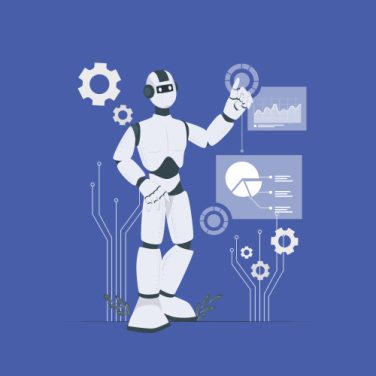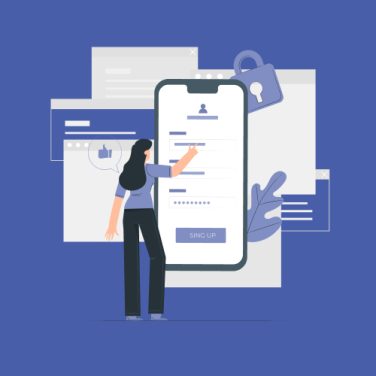Artificial intelligence (AI) in recruitment uses machine learning, Natural Language Processing (NLP), and predictive analytics to automate and optimise hiring workflows, eliminating manual bottlenecks and ensuring data-driven candidate shortlisting across high-volume applicant pools.
Key benefits include accelerated time-to-hire—often halving cycle times—and enhanced quality-of-hire via predictive scoring. Objective screening mitigates bias by anonymising candidate data and standardising evaluation criteria.
Candidate experience improves through responsive chatbots, personalised status updates, and efficient scheduling. Real-time dashboards enable data-driven HR decisions, prioritising top talent and optimising offer terms based on acceptance likelihood.
Market trends reveal rapid adoption of AI hiring tools across AI and recruitment companies serving enterprise, mid-market, and SME segments.
Gartner predicts 70% of large organisations will use AI for at least one segment of the recruiting lifecycle by 2026. SMEs adopt modular, cost-effective solutions to manage up to 1,000 annual hires without heavy upfront investment. The ai and recruitment jobs market is projected to grow at a 15% CAGR through 2028.
Recruitment technology now spans resume screening, candidate sourcing, interview scheduling, offer optimisation, and onboarding automation. MiHCM’s AI modules deliver unified, end-to-end workflows. For foundational strategy, see the ultimate guide to AI in recruitment and explore AI best practices for 2025.
This guide showcases real-world AI and recruitment examples through global enterprise, mid-market, and SME case studies, highlighting quantitative ROI, implementation best practices, and actionable lessons for HR leaders integrating AI recruiting tools.
Key takeaways at a glance
- AI can halve time-to-hire and increase quality-of-hire through predictive candidate scoring, as demonstrated by ai and recruitment examples across industries and roles.
- Deployments reveal 30–50% cost savings in recruitment spend, cutting agency fees and freeing recruiter time for strategic engagement.
- MiHCM’s AI suite provides end-to-end automation, from candidate screening to onboarding, enabling AI and recruitment companies to scale efficiently.
- Best practices include ethical oversight via bias audits, cross-functional governance, transparency with candidates, and iterative model optimisation for continuous improvement.
Key use cases and top examples of AI in recruitment
Sourcing and screening: AI-driven sourcing and screening transform candidate identification by parsing resumes, social profiles, and job board data. Algorithms move beyond keyword matching to analyse contextual relevance, transferable skills, and career trajectories. Predictive fit scoring ranks applicants based on historical performance patterns.
Engagement and scheduling: 24/7 chatbots and virtual assistants can engage candidates, answer FAQs, and schedule interviews. Automated messaging maintains candidate interest and reduces drop-off rates. Recruiters regain up to 40% of their time previously spent on coordination tasks, allowing deeper focus on relationship-building and employer branding.
Offer optimisation and onboarding: Predictive offer negotiation tools analyse market benchmarks, candidate preferences, and historical acceptance data to recommend optimised compensation packages. Acceptance rates improve by 20% through dynamic offer adjustments. Once accepted, automated onboarding delivers personalised schedules, digital forms, and VR-guided orientations.
Case Study: Global enterprise successful AI deployment
A Fortune 500 technology firm processing 50,000+ annual applications integrated AI dashboards for talent pipeline analytics and diversity tracking. Machine learning models screened technical and soft skills, forecasting candidate success and cultural fit. Predictive demand forecasting enabled proactive sourcing ahead of key product launches.
Within six months, the organisation realised:
- 40% reduction in agency spend, saving $ 3.2 million annually.
- Time-to-hire decreased from 60 to 35 days, accelerating business critical projects.
- Recruiter productivity improved by 45%, handling 600+ applications each.
- Governance: cross-functional ethics committee and continuous bias auditing ensured fairness.
This global deployment balanced AI-driven speed with human oversight, driving cost efficiency and improved diversity across technology, sales, and engineering functions.
Case study: Mid-market AI hiring transformation
A regional financial services firm managing 5,000 annual hires deployed AI for interview scheduling and candidate follow-ups. AI chatbots handled 1,200 candidate inquiries per month, maintaining engagement even outside office hours. The firm integrated AI to screen resumes against role-specific criteria, boosting shortlist accuracy by 25%.
By automating routine tasks, recruiters reclaimed 30% of their time, shifting focus to relationship-building with top-tier candidates and refining employer branding. Automated reminders and calendar integrations reduced scheduling conflicts by 60%, improving candidate satisfaction scores by 15%.
Increased shortlist precision by 25%, reducing time spent on unqualified candidates.
Recruiters saved 30% of coordination time, enabling deeper candidate engagement.
Annual savings of $ 250 K in recruiter hours and agency fees.
Candidate NPS improved from 45 to 60, reflecting enhanced experience.
The mid-market firm established an AI governance council with HR, IT, and compliance to oversee model performance and ethical use, ensuring alignment with regulatory standards while driving tangible ROI.
Case study: SME implementation of AI recruitment
A fast-growing startup handling 500 applicants per role adopted AI screening to manage hiring across engineering, marketing, and operations functions. Automated job postings to niche boards increased application volume by 60%, attracting diverse talent pools. Keyword-agnostic parsing surfaced high-potential candidates who traditional filters would have missed.
Onboarding automation streamlined document verification and compliance checks. New hires completed digital forms in under 20 minutes, compared to two hours previously. Personalised onboarding schedules and interactive orientation modules reduced first-day administrative tasks by 70%.
- Application volume rose by 60%, expanding talent pipelines.
- Role fill rates accelerated by 20%, reducing vacancy costs.
- Onboarding time halved, improving new-hire readiness.
- Employer brand scores increased by 35% on candidate surveys.
For this SME, AI delivered scalable AI recruitment with minimal configuration, enabling rapid growth while maintaining a positive candidate experience and operational efficiency.
Quantifying ROI: Measurable outcomes from AI hiring solutions
Comparing pre- and post-AI recruitment metrics across enterprise, mid-market, and SME deployments highlights the quantifiable value of AI-driven hiring solutions.
| Segment | Cost Savings | Time-to-Hire Reduction | Applications/Recruiter | Diversity Increase |
|---|---|---|---|---|
| Enterprise | 40% | 42% (60→35 days) | 350→600 | 18→28% |
| Mid-Market | 30% ($250K) | 35% (40→26 days) | 120→200 | 22→30% |
| SME | 25% | 20% (30→24 days) | 80→120 | 15→22% |
Key insights:
- Quantifiable ROI: AI deployments yield hard cost savings in agency fees and recruiter labour.
- Reduced Time-to-Hire: Standardised AI workflows accelerate candidate throughput across segments.
- Productivity Gains: Recruiters process 60–70% more applications with AI screening.
- Diversity Improvements: Objective algorithms drive 5–10 percentage-point increases in underrepresented hires.
Best practices and lessons learned for HR leaders
- Establish governance: Form ethics committees to define transparent AI policies, conduct regular bias audits, and ensure accountability across ai and recruitment companies.
- Pilot and iterate: Start with small-scale AI pilots, measure impact on time-to-hire and quality metrics, then scale successful use cases systematically.
- Cross-functional alignment: Involve legal, IT, and compliance teams early to address data privacy, integration, and regulatory requirements.
- Continuous improvement: Monitor model performance, retrain algorithms with representative data, and refine parameters as workforce needs evolve.
- Seamless transition: Use Talent Acquisition & Onboarding workflows to ensure smooth handoffs from AI screening to human interviews, preserving candidate experience.
- Diversity analytics: Leverage HR Analytics dashboards to track inclusion goals and pre-emptively address pipeline imbalances.
Implementing these scalable best practices enables organisations—from startups to global enterprises—to harness AI recruitment ethically and effectively, driving enhanced diversity and operational efficiency.
Ethical, compliance & regulatory considerations in AI hiring
The regulatory landscape for AI hiring spans GDPR, EEOC guidelines, and emerging legislation. Organisations must ensure candidate data is collected, processed, and stored in compliance with data protection laws. Transparent privacy notices and opt-in mechanisms demonstrate respect for individual rights.
Bias mitigation requires representative training data, regular fairness assessments, and human-in-the-loop validation. Ethics committees and bias audits help identify unintended model drift or discriminatory patterns. Candidates should be informed of AI use, with clear appeal processes for adverse decisions.
Liability and accountability frameworks must assign ownership for AI-driven outcomes, defining escalation paths for disputes. Human oversight at critical junctures—such as final interview selection and offer negotiation—balances automation with judgment.
By embedding compliance and ethical considerations into AI recruitment lifecycles, HR leaders safeguard reputation and candidate trust while maintaining innovation velocity.
Choosing and integrating AI recruitment tools: Tips and strategies
Selecting the right AI recruitment solution requires clear objectives and integration planning. Define whether speed, quality-of-hire, cost reduction, or diversity improvement is the primary goal. This focus guides vendor evaluation and feature prioritisation.
- Integration readiness: Ensure compatibility with existing ATS, HRIS, and communication platforms. APIs and prebuilt connectors reduce implementation time.
- Vendor evaluation: Assess model explainability, customisation options, compliance certifications, and support services. Request transparent performance benchmarks and reference deployments.
- Change management: Train recruiters on AI literacy and data interpretation. Communicate benefits internally, address concerns, and provide ongoing support.
- Performance monitoring: Establish KPIs and dashboards to track adoption, time-to-hire, and candidate feedback. Iterate based on data-driven insights.
By following these strategies, HR teams can integrate AI recruitment tools effectively, achieving immediate operational gains and long-term scalability while minimising disruption.
The future of recruitment: Trends and preparing for AI evolution
Generative AI for talent branding will automate creation of personalised job ads, outreach emails, and social media content at scale. Natural language models will craft compelling descriptions aligned with employer values and candidate preferences.
Augmented interviewing combines AI-driven video analysis, gamified assessments, and psychometric profiling to yield deeper candidate insights. These tools enhance objectivity and uncover soft skills, cognitive abilities, and cultural fit in a standardised manner.
Talent marketplaces powered by real-time data will match both internal and external candidates to open roles continuously. AI algorithms will recommend upskilling paths and project-based assignments, fostering dynamic workforce flexibility.
Reskilling and upskilling platforms integrated with ATS systems will identify future skill gaps and recommend learning paths. Organisations can proactively develop talent pipelines aligned with evolving business needs.
HR leaders who invest in these emerging trends and maintain agile governance will position their organisations at the forefront of ai and recruitment jobs innovations.
คำถามที่พบบ่อย
What is AI in recruitment?
AI in recruitment uses machine learning and NLP to automate hiring tasks, screen resumes, and predict candidate fit based on historical data and performance patterns.
Is AI replacing human recruiters?
No. AI augments recruiters by handling repetitive tasks and data analysis, allowing professionals to focus on relationship-building and complex decision-making.
How can AI improve diversity and inclusion?
By standardising screening criteria and removing biased keywords, AI ensures broader applicant reach and objective evaluation, leading to more diverse hires.



